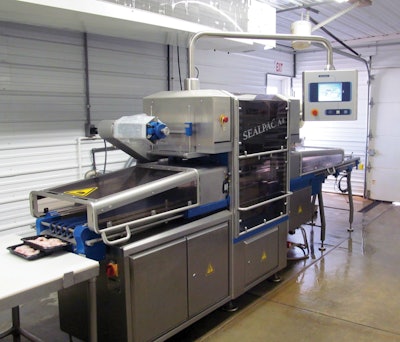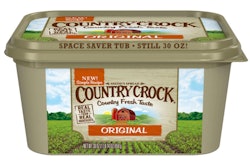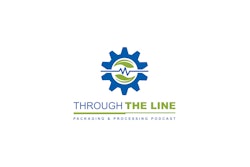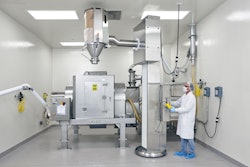
Refrigerated chicken parts vacuum packaged in unsupported film has been a staple for some time at Locust Point Farms in Elkton, MD. But about two years ago the firm decided to add a tray to its vacuum skin packaged offerings because the in-store appearance was so much better, says company owner Timothy Detweiler.
To make the switch to trays, the firm installed a Model A4 from Sealpac. A chamber-style machine, it packages trays two up, which is perfectly adequate for the kind of volumes Locust Point has in mind.
A conventional CPET tray and equally conventional vacuum skin pack film were selected when Locust Point got launched with this package format. But in the past few months, both tray and film have been changed. Trays are now supplied by CPT-Go Green and SkinFreshTop lidding material is from Schur Flexibles.
The change in lidding material—described by Schur Flexibles as a seven-layer coextrusion that includes EVOH for oxygen barrier—came about as Locust Point sought to optimize its packaging from a cost perspective. The new material has all the performance characteristics required. And because it’s less robust, it costs less. Unfortunately, as Locust Point began trials with the new material, they discovered that as it went through the rigors of being softened and stretched up into the vacuum heat seal tooling of the Sealpac machine, a gap in the barrier material could occasionally be produced, which in turn could compromise shelf life.
As luck would have it, Sealpac had only recently introduced its TraySkin xplus technology, which is designed to be gentler on cost-optimized lidding materials like the one Locust Point had switched to. When Sealpac’s previous tooling closed on a package, the lidding material was rather aggressively drawn up into a dome where heat and a predetermined dwell time conditioned the film so that it could be blown down out of the dome and onto the product-filled tray. Heat-seal tooling would then close on the flange of the tray as vacuum was applied, thus producing a vacuum skin-packed tray.
TraySkin xplus tooling now retrofitted into the Sealpac machine operates differently. No longer is the film aggressively drawn up into the heated dome when the tooling closes. Instead, once the tooling closes on the film, hot air is blown onto it to preheat it. Only then is vacuum activated to pull the film up into the dome. But now the tooling heats the film without it having to come in direct contact with the top of the dome. Overall it’s a gentler handling method.
New software
Another feature that distinguishes the new tooling is a function of new software that has been added. Carsten Fouquet, General Manager of Sealpac USA LLC, explains.
“You can now select how far into the dome you want to draw the film. For example, if you have chicken breasts in the tray, they may protrude 25 mm above the tray flange. Drumsticks, on the other hand, may only protrude 5 mm. You want to pull the film up 30 mm into the dome for the chicken breasts to get the proper amount of stretch. But for the drumsticks, which don’t protrude nearly as high, you don’t want to stretch the film that much because if you do, when it’s blown back down onto the tray you wind up having unsightly wrinkles in the film. So with the new tooling, and with an assist from some new software, the operator selects on the touch screen panel which product is being packaged. The tooling then knows whether it should pull the film up 12 mm, or 30 mm, or whatever the case may be. It’s all about having far more adjustability over things like temperature, dwell time, amount of vacuum exerted, and so on. And it’s software that governs the adjustments you choose to make, which means you minimize opportunities for human error.”
Locust Point Farms represents the first commercial application of TraySkin xplus in the U.S. Going forward, says Fouquet, Sealpac will equip all of its tray-sealing machines with this next-generation tooling and software.
In addition to paying about half of what he was originally paying for lidding material, Detweiler says he gets a 30% increase in throughput due to the fact that the lidding material can be optimally conditioned for application in a shorter amount of time than what was required for the lidding film used previously. Finally, the Schur Flexibles film is clearer than what was used previously.
As for the CPT Go-Green tray, it’s thermoformed from what CPT Go-Green describes as a coextruded high-barrier polypropylene structure whose composition CPT considers proprietary. What makes it “green” is the patented way in which thermoforming is done. In most conventional thermoforming operations, where the forming web is unwound from a roll, a sizeable matrix of material is left behind as scrap. Some idea of what it looks like is illustrated in Figure 1. But CPT’s approach to thermoforming is sheet-fed as opposed to roll-fed, and it leaves significantly less scrap, as can be seen in Figure 2.
CPT remains pretty guarded about precisely how its thermoforming technology operates, nor does it share any photos of machinery or tooling. The firm claims that its approach saves 30% in energy and materials.
At Locust Point Farms, a pressure-sensitive paper label is applied by hand and the packs are loaded into 12-count corrugated shippers for distribution into the northeast.



















